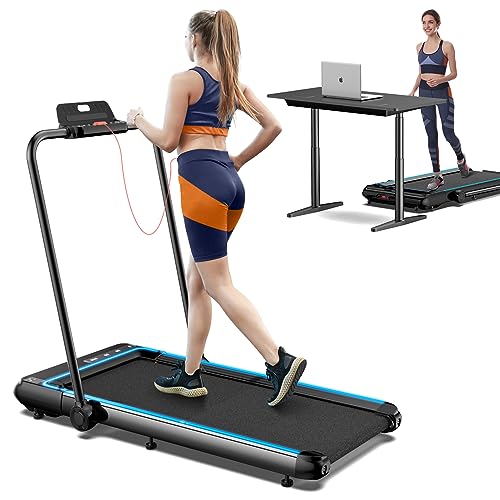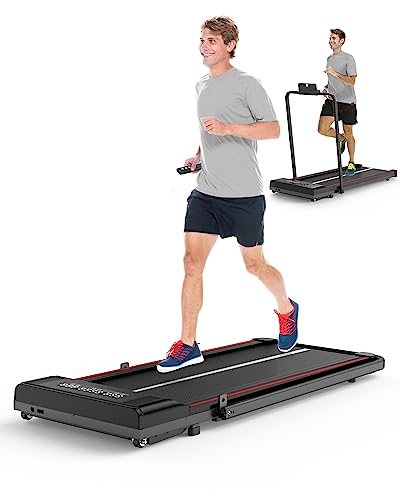You'll Never Be Able To Figure Out This Tread Mill's Secrets
페이지 정보
작성자 Cole 작성일 25-07-19 09:25 조회 4 댓글 0본문
The Treadmill: A Comprehensive Guide to Understanding and Utilizing This Fitness Machine
Treadmills are a staple in health clubs and homes alike, acting as an efficient tool for cardiovascular exercise. With their adaptability and variety of features, treadmills accommodate users of all physical fitness levels. This short article looks into the ins and outs of treadmills-- covering their advantages, Tread mill types, usage tips, maintenance, and far more.
The Benefits of Using a Treadmill
Utilizing a treadmill can supply numerous health advantages, making it a popular choice among fitness lovers. Below are some crucial benefits:

Cardiovascular Health: Regular treadmill use can improve heart health by increasing aerobic capability and cardiovascular endurance.
Weight Management: Treadmills make it possible for users to burn calories efficiently, helping in weight reduction or management.
Convenience: With the ability to work out inside, treadmills eliminate ecological barriers, like weather condition and time constraints.
Flexibility: Users can manage speed, slope, and workout duration, allowing them to tailor their workout routine to fit their needs.
Joint Impact: Many modern-day treadmills offer cushioning, which can minimize the effect on joints compared to working on hard surfaces.
This detailed guide examines the different kinds of treadmills and what functions to think about when acquiring one.
Kinds of Treadmills
Picking the right kind of treadmill depends upon specific physical fitness goals, spending plan, and offered space. Here are the different ranges:
1. Handbook Treadmills
- Meaning: These treadmills operate without motors; users power the belt through their movements.
- Benefits: Typically more cost effective and energy-efficient.
- Disadvantages: Limited functions and less stability compared to motorized options.
2. Motorized Treadmills
- Meaning: Equipped with motors to control belt speed and incline.
- Advantages: Versatile includes like predetermined programs and digital displays.
- Downsides: More costly and need electric outlets.
3. Folding Treadmills
- Meaning: Treadmills that can be collapsed to conserve space when not in usage.
- Benefits: Ideal for those with minimal space.
- Drawbacks: May not be as tough, depending on the design.
4. Commercial Treadmills
- Definition: High-quality, sturdy machines developed for frequent usage in fitness centers.
- Benefits: Built to withstand rigorous exercises with functions matched for varied training requirements.
- Drawbacks: Generally more expensive and bigger.
5. Smart Treadmills
- Definition: Treadmills geared up with clever innovation that tracks exercises and offers virtual training.
- Advantages: Interactive functions enhance the user experience.
- Downsides: Higher costs and possible for technical concerns.
Features to Consider When Buying a Treadmill
When buying a treadmill, it's crucial to assess its features according to personal requirements and budget. Important functions consist of:
Motor Power: Measured in horse power (HP); a motor in between 2.0-- 3.0 HP appropriates for most users.
Running Surface: The belt size must accommodate your stride. A surface area of at least 20" x 55" is typically suggested.
Slope Options: Look for a treadmill offering numerous slope levels to replicate outside running and boost exercise strength.
Weight Capacity: Ensure the treadmill can support the user's weight; most can accommodate weights between 250 lbs and 400 lbs.
Cushioning: Good quality cushioning effects walking or running convenience and can help prevent injuries.
Foldability: If area is a concern, consider a treadmill that can be folded.
Technology: Features like heart rate screens, workout programs, and Bluetooth connection can boost the user experience.
Table: Key Features and Considerations
| Feature | Value |
|---|---|
| Motor Power | Vital for constant efficiency and user weight capability. |
| Running Surface | Impacts user convenience and stride length; larger surfaces are much better for taller people. |
| Incline Options | Allows varied workouts and targets different muscle groups. |
| Weight Capacity | Vital for safety and resilience; pick a model that supports your weight. |
| Cushioning | Minimizes joint effect and makes workouts more comfortable. |
| Foldability | Crucial for users with restricted area. |
| Innovation | Boosts exercise experience and can use important tracking data. |
Tips for Effective Treadmill Workouts
To take full advantage of the benefits of utilizing a treadmill, think about the following ideas:
Warm-Up and Cool-Down: Always start with a 5-10 minute warm-up and surface with a cool-down to prevent injury.
Vary Your Workouts: Mix walking, jogging, and running to keep things intriguing and work different muscle groups.
Incorporate Incline: Use slope settings to challenge yourself and increase calorie burn.
Stay Hydrated: Keep water nearby to remain hydrated during your exercises.
Listen to Your Body: Pay attention to any discomfort or fatigue; rest when required.
Treadmill Maintenance Tips
To make sure longevity and optimal performance of a treadmill, regular upkeep is vital. Key maintenance practices consist of:
Lubrication: Frequently lubricate the running belt for smoother operation.
Cleaning up: Wipe down the machine after each use to prevent dust and sweat buildup.
Tightening up: Regularly check and tighten loose bolts or screws.
Check the Belt Alignment: Ensure the belt is lined up correctly, adjusting as required for even wear.
Often Asked Questions (FAQs)
1. How often should I use a treadmill for weight-loss?
Utilizing a treadmill for a minimum of 150 minutes of moderate-intensity aerobic workout per week can contribute to weight loss.
2. Can I walk on a treadmill every day?
Yes, walking on a treadmill daily can be useful; nevertheless, integrating day of rest is suggested to prevent overuse injuries.
3. What should I wear when utilizing a treadmill?
Go with comfy, moisture-wicking clothes and supportive shoes to improve your workout experience.
4. Is it much better to walk or work on a treadmill?
Both walking and running offer distinct advantages; the very best option depends on your physical fitness level, objectives, and personal preference.
5. Exist specific treadmills designed for little areas?
Yes, folding treadmills and compact designs are ideal for small spaces. Always examine measurements before purchasing.
The treadmill stays a flexible and extensively used piece of physical fitness devices. Its blend of convenience, versatility, and effectiveness makes it suitable for users varying from novices to experienced athletes. By understanding the various types and features, along with integrating diverse exercises, users can make the most of the benefits of their treadmill routine. Whether for cardiovascular training, weight loss, or just maintaining an active lifestyle, treadmills supply a trusted opportunity for achieving physical fitness objectives.

댓글목록 0
등록된 댓글이 없습니다.
